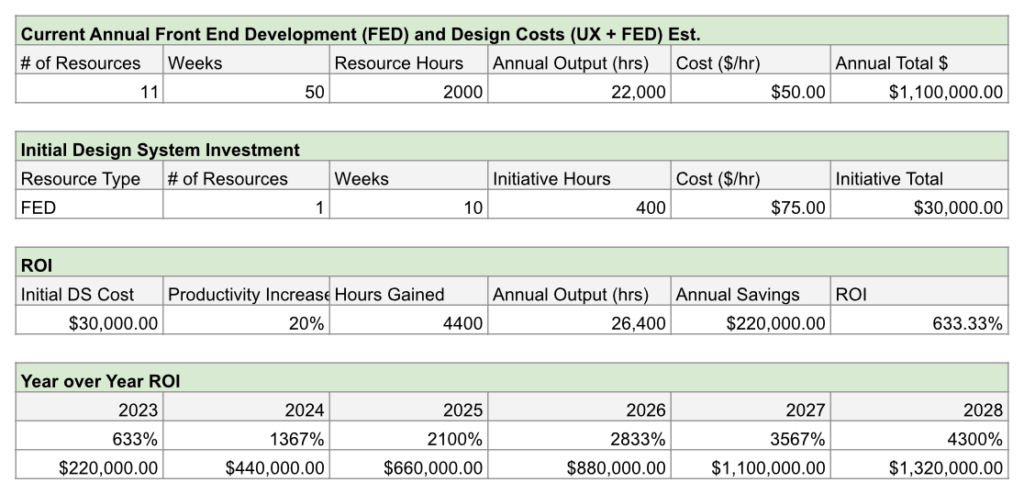Executive Summary:
Sometimes you just need to put a number on a thing to prove its value to an organization. In this case it was the implementation of a design system.
Challenge
How might we quantify the organizational value of adopting a design system methodology.
Results
I’ll quote the CTO, “well, this is a no brainer, let’s do this”. However, if you’re familiar with design system implementation, you know gaining approval is just the beginning.
The details
It wasn’t overnight that we gained the approval for the design system. It took roughly six months to work through the entire organization from bottom to top. To work and rework the proposal, to clear all the tech requirements, to provide organizational education on what a design system is and how it works.
The math
The following table breaks down current front end development and UX design costs,
the initial investment cost, initial ROI and the accumulated ROI until 2028. Please keep in mind the numbers show here reflect the minimum expected productivity increase of 20%. Some companies, including IBM, calculate an expected productivity increase of 47%. At minimum every 5 years a design system is in place it will cover the cost of FED and UX design.
Front End Design and Development

Speed to market
In addition to cost benefits you’ll can also provide an increased speed to market. If you decide to use this table it’s also handy for estimating project costs.

Try it yourself
If you’d like to give it a try for yourself, I’ve put this Design System ROI Calculator on Google Docs.
The journey
If you’re trying to convince an organization to adopt the design system methodology find a partner on the development side and a sponsor within leadership. I worked within my team first to gain approval from the Chief Product Officer (CPO).
You’ll want to start by treating this as a project. I started with stakeholder interviews and worked my way up. Taking the feedback from each and aligning it with my approach. This gave me insight into what people needed to see in order to sponsor and agree to the design system approach.
The most beneficial step I took was partnering with a lead on the development team. It is much easier to answer development concerns with a member of the development team. As easy as it may seem from a design perspective it’s not necessarily as easy on the development side. Just remember I said, “as easy as it may seem.”
Stay tuned
This was a much longer journey than this post contains and in the future I’ll be writing the full story. For now I wanted to post this quick study to support design leaders who face a similar challenge. If you’re lucky, the math might be all your need.

